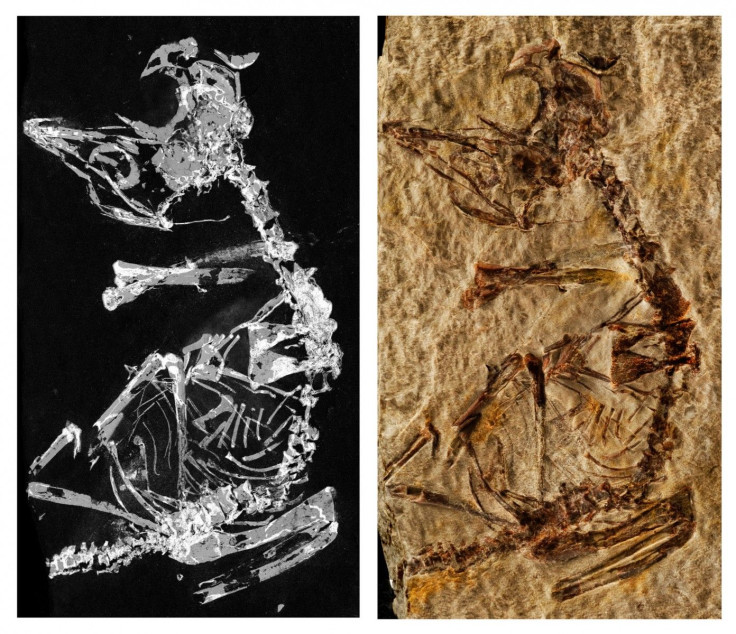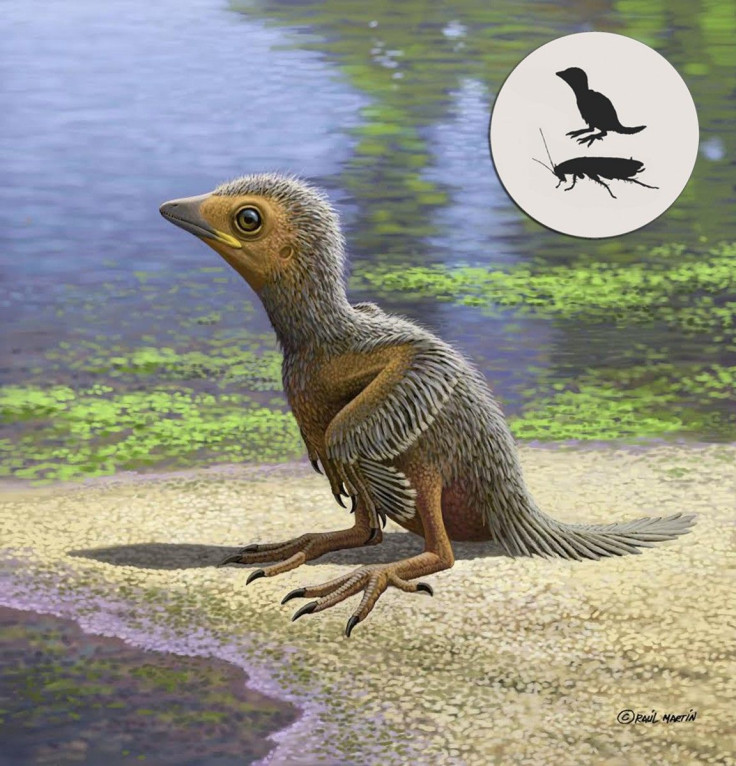127-Million-Year-Old Baby Bird Fossil Found That Lived Amid Dinosaurs

Paleontologists have discovered the fossilized remains of an ancient baby bird that lived about 127 million years ago. The nearly complete skeleton of the prehistoric creature dates back to the Mesozoic Era and is the smallest known bird fossil discovered from that period. The tiny creature is believed to have lived at a time when dinosaurs ruled supreme on Earth.
The remains of the prehistoric creature were almost perfectly preserved, which paleontologists hope could provide an insight into how early birds came into existence during the age of the dinosaurs. The fossil belonged to a chick that was part of a group of ancient birds called Enantiornithes.

The entire skeleton of the prehistoric creature measures less than five centimeters. In other words, the bird was likely smaller than your little finger. Paleontologists believe that the ancient baby bird weighed a mere 0.3 ounces when it was alive.
"[Hatchling fossils are] extremely fragile and very difficult to find in the fossil record," the new study’s co-author Luis Chiappe, director of the Dinosaur Institute at the LA Natural History Museum, told National Geographic . "[This find is] really neat because it's one of those very rare, very young individuals."
While analyzing the remains of the ancient creature, researchers found that the baby bird died not too long after its birth. The tiny bird’s short life meant the ancient creature’s bones were still in the developmental stage. This provided researchers the opportunity to study and better understand the avian species’ bone structure and development.
“The evolutionary diversification of birds has resulted in a wide range of hatchling developmental strategies and important differences in their growth rates. By analysing bone development we can look at a whole host of evolutionary traits,” the lead author of the new study, Dr Fabien Knoll from the University of Manchester, said in a statement.
The researchers used synchrotron radiation to image the tiny fossil at a submicron level. This allowed the paleontologists to make a highly detailed study of the bones’ microstructures.
“New technologies are offering paleontologists unprecedented capacities to investigate provocative fossils. Here we made the most of state-of-the-art facilities worldwide including three different synchrotrons in France, the UK and the United States,” Dr. Knoll added.
The analysis revealed the baby bird’s breastplate bone was still made mostly of cartilage and was yet to develop into solid bone. This means at the time of its death, the tiny bird was unable to take flight.
In the case of some modern day birds, limited bone development in hatchlings would lead young birds to become highly dependent on their parents for feeding and care. However, according to the new study, the ancient baby bird’s limited bone development might not have necessarily made them dependent on their parents.
The bone development patterns observed in this specimen, as well as other known extremely young enantiornithine birds, suggest that this specific group of prehistoric birds could have been more diverse than previously thought.
“This new discovery, together with others from around the world, allows us to peek into the world of ancient birds that lived during the age of dinosaurs. It is amazing to realise how many of the features we see among living birds had already been developed more than 100 million years ago,” Chiappe said in a statement.
The new research was published in the journal Nature Communications.
© Copyright IBTimes 2024. All rights reserved.











